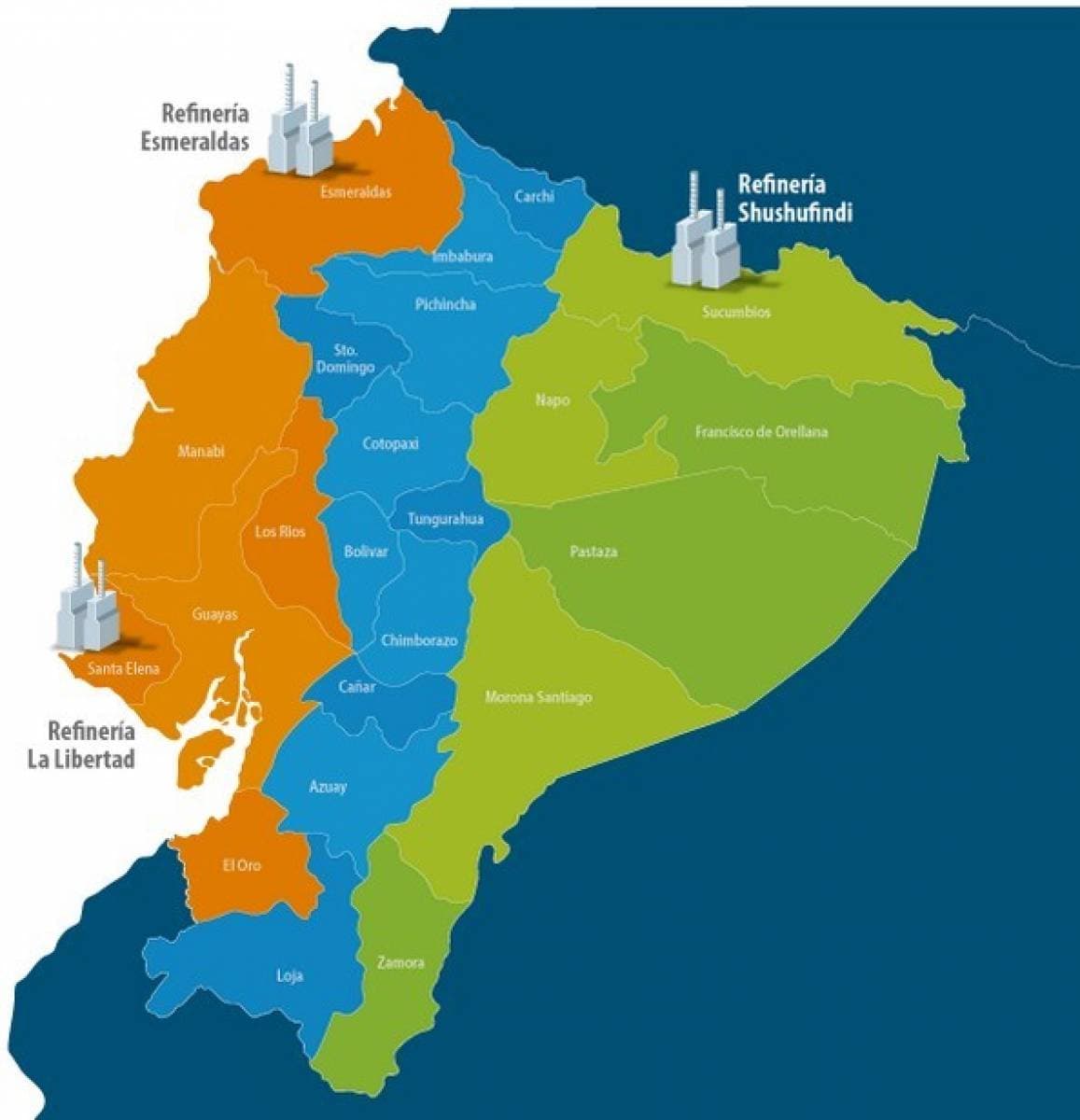Against the background of the United States softening its rhetoric vis-à-vis Huawei and Saudi Arabia taking matters into its own hands in cutting export rates significantly below the 7mbpd export threshold, crude prices have steadied a bit on Monday-Tuesday this week. The push factors still remain on the table – OPEC has once again cut its demand growth estimate for 2019 to 1.1kbpd and trade wars continue to unnerve market observers – to counter this, nations whose economy is heavily crude-dependent take special care not to let the crude prices drop too much (Saudi Arabia leading the pack). Germany and China have simultaneously announced market stimuli which might shake up their domestic economy a bit, building market confidence, further buttressed by crude inventory drawdowns over the week in the United States.
Yet the balance is still a very fragile one as there is still no tangible guarantee that the China-US confrontation won’t bring down global growth prospects for the upcoming months and years. By Wednesday afternoon, global crude benchmark Brent traded at $60.4-60.9 per barrel, whilst WTI was assessed at $56.4-56.6 per barrel.
1. Alberta Extends Production Cuts To End of 2020
- The Alberta government has extended its crude production curtailment policy to the end of 2020 with the proviso that it can cancel it altogether if the pipeline squeeze situation ends.
- Initially, the previous Alberta government led by Rachel Notley ruled…
Against the background of the United States softening its rhetoric vis-à-vis Huawei and Saudi Arabia taking matters into its own hands in cutting export rates significantly below the 7mbpd export threshold, crude prices have steadied a bit on Monday-Tuesday this week. The push factors still remain on the table – OPEC has once again cut its demand growth estimate for 2019 to 1.1kbpd and trade wars continue to unnerve market observers – to counter this, nations whose economy is heavily crude-dependent take special care not to let the crude prices drop too much (Saudi Arabia leading the pack). Germany and China have simultaneously announced market stimuli which might shake up their domestic economy a bit, building market confidence, further buttressed by crude inventory drawdowns over the week in the United States.

Yet the balance is still a very fragile one as there is still no tangible guarantee that the China-US confrontation won’t bring down global growth prospects for the upcoming months and years. By Wednesday afternoon, global crude benchmark Brent traded at $60.4-60.9 per barrel, whilst WTI was assessed at $56.4-56.6 per barrel.
1. Alberta Extends Production Cuts To End of 2020

- The Alberta government has extended its crude production curtailment policy to the end of 2020 with the proviso that it can cancel it altogether if the pipeline squeeze situation ends.
- Initially, the previous Alberta government led by Rachel Notley ruled that the mandated production cuts should run their course by December 2019.
- Yet there has been no substantial addition in crude transportation capacity in the meantime, primarily due to the delays marring Enbridge’s 760kbpd Line 3 replacement program.
- Without the production caps in vigor, Alberta’s oil producers would produce 150kbpd more than its pipeline system can export, which would result once again in drastic discounts.
- Western Canadian Select, Alberta’s flagship crude, traded at a $13 per barrel discount to the CMA, half of what it was exactly a year ago.
2. Iran September OSPs Reflect Saudi Aramco as if Nothing Happened



- Replicating the moves of other Middle Eastern crude exporters, the Iranian national oil company NIOC has cut its September-loading Asian official selling prices whilst hiking European ones.
- Iranian Light destined for Asian customers in September will be assessed at a 1.25 per barrel premium to the Oman/Dubai average, a 70 cent drop month-on-month (in line with Aramco’s 75 cent decrease for Arab Light).
- By cutting Iranian Heavy 45 cents m-o-m to a -0.05 discount to Oman/Dubai, NIOC has widened the Arab Heavy-IRH spread to an all-time high of 70 cents per barrel.
- Up until August 2018, Iranian Heavy was always assessed at a premium to Arab Heavy due to its superior quality.
- September-loading OSPs for cargoes bound for Northwest Europe saw a 2.4-2.6 per barrel cut, whilst prices for the Mediterranean were reduced by 2.15-2.7 per barrel.
- These changes were less drastic than Saudi Aramco’s, largely due to NIOC having more time to reflect on how pricing on the European markets evolves.
- Iran’s vessels have disappeared from the general public’s radar – vessel-tracking softwares were only able to detect 4 loadings taking place in July 2019.
3. Kuwait Adds Nuance to September OSPs


- The Kuwaiti state oil corporation KPC lowered its September-loading OSPs for its flagship Kuwait Export Blend (KEB) bound for Asian markets by 40 cents to a 1 USD per barrel premium over the Oman/Dubai average.
- This leaves the September KEB-Arab Medium spread the narrowest in 6 years at -0.25 per barrel discount, largely thanks to the ongoing medium sour market tightness.
- KPC decreased its September OSPs for its Super Light Crude grade by 90 cents month-on-month to a 1.60 per barrel premium against the Oman/Dubai average, the lowest since February 2019.
- Similarly to Saudi Aramco and SOMO, KPC simply rolled over its Americas September OSPs and hiked European KEB prices by 2.50 per barrel.
- Kuwaiti crude exports in August 2019 are expected to reach 1.91mbpd, down 3 percent from last month’s 1.97mbpd, marking the fourth consecutive month that saw exports going below the 2mbpd threshold.
4. Kenya Exports First-Ever Crude Cargo to China

- Chinese state-owned chemicals firm ChemChina has secured the first-ever Kenyan export crude cargo, beating seven other, predominantly Southeast Asian bidders along the way.
- As Kenya’s Lokichar-Lamu crude export pipeline is still not ready and will only be around 2022-2023, Tullow had to transport the 200kbbls cargo by railroad to Mombasa on the Kenyan seacoast.
- Despite being a light sweet grade with a density of some 36° API, the cargo was sold at a roughly $2 per barrel discount to Dated Brent.
- ChemChina sees Kenya’s Lokichar crude as a suitable replacement for the Russia-exported ESPO, which it regularly buys to its Chengyi and Zhenghe refineries in Shandong.
- Tullow, jointly with its partners Total and Africa Oil, now produces merely 2kbpd (and expects second 200kbbbls cargo discharged in Q4 2019) but expects to ramp up production to 80kbpd in a couple of years.
5. European Refiners Are All Over Nigeria’s Egina

- Nigeria’s latest grade in its export portfolio, the 0.2mbpd output capacity medium sweet Egina crude (28° API density, 0.17 percent Sulphur content) has become Europe’s new refining sweetheart, despite general interest in Nigerian crudes easing somewhat.
- As opposed to the likes of Bonny Light or Brass River, Egina is highly valued among refiners in the Mediterranean for being distillate-rich, as well as producing a relatively high yield of vacuum distillates.
- In the first 7 months of the crude being exported, only China, Sri Lanka, the United States and now Brazil have managed to land at least one Egina cargo – all the other buyers were European.
- Little wonder that Total, the operator of the $16 billion Egina project, propels France into the top spot by bringing 44kbpd of Egina over in February-August 2019, with the Netherlands a close second with 39kbpd.
- All the while Bonny and Qua Iboe traded at around Dated Brent +2 in the first half of August and were far from being sold out, Egina surged as high as to wield a $3 per barrel premium against Dated and cleared quite quickly.
6. Ecuador Seeks Investors for Rebuilding Refinery from Scratch

- Ecuador’s state oil company PetroEcuador has decided to decommission its 110kbpd Esmeraldas Refinery, built in 1978, and build a new, more sophisticated one, instead.
- This spring Ecuador’s Energy ministry was voicing its interest in upgrading the Esmeraldas Refinery, claiming external help was needed in rebuilding the ailing catalytic cracking unit.
- Apart from Esmeraldas, PetroEcuador runs two other refineries in the country, the 45kbpd La Libertad and the 20kbpd Shushufindi Refineries.
- The new refinery, which should espouse EURO-5 fuel emission norms, should cost the future investor(s) roughly 6 billion.
- As the Ecuadorian government promised that no worker will be laid off in the process of restructuring, international investors might be wary of unsolicited government interventionism.
7. Congo Claims Game-Changing Crude Discovery

- Energy authorities in the Republic of Congo heralded the discovery of a “game-changing” oil field in the Delta de la Cuvette license block by two domestic companies.
- SARPD Oil and PEPA, the firms owning the licenses, claim they have found 359 million barrels of recoverable oil at 4 fields located within the block, the first-ever onshore discovery in Congo.
- The discoveries are located some 900km from the coast, with barges being the only mode of transportation to move the crude to the Djeno export terminal.
- Interestingly, the discovery happens against the background of Congo conducting the 2nd phase of its licensing round, comprising both offshore and onshore sites, raising the question of a potential attention-grabbing stunt on behalf of the authorities.
- The head of SARPD (and allegedly its only shareholder) is the son of Congolese President Denis Sassou Nguesso.
- Congo has been keen to ramp up production to satisfy ever-robust Chinese demand for its flagship crude Djeno, yet the licensing round, started in early 2018, has failed to impress so far.

























